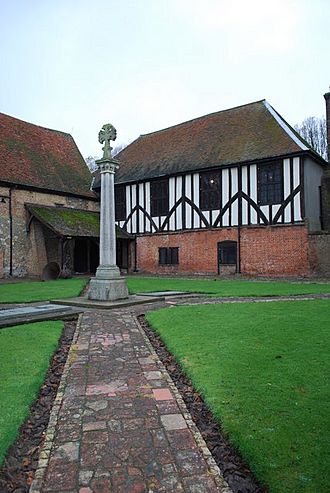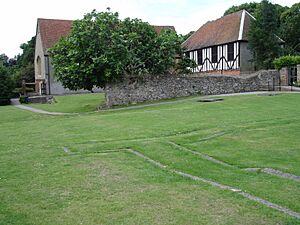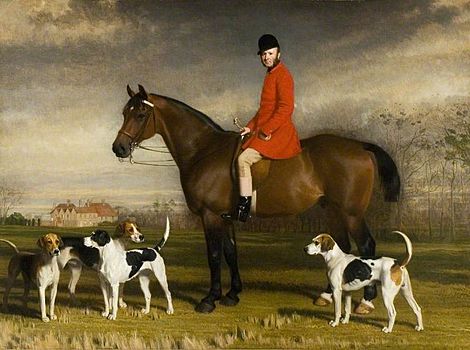Prittlewell Priory facts for kids
Quick facts for kids Prittlewell Priory |
|
|---|---|

Prittlewell Priory in 2008 – cloister area and claustral buildings
|
|
| General information | |
| Status | Preserved |
| Type | Priory |
| Location | Prittlewell |
| Town or city | Southend-on-Sea |
| Country | England |
| Coordinates | 51°33′11″N 0°42′18″E / 51.553°N 0.705°E |
| Construction started | c.1110 AD |
Prittlewell Priory is a very old building in Prittlewell, Southend, England. It was built in the 12th century by monks. These monks belonged to the Cluniac Order, a type of monastic group. The priory was originally a smaller branch of a larger priory in Lewes.
Later, during the time of King Henry VIII, the priory became a private home. This happened when many monasteries were closed down. In 1917, a kind man named R. A. Jones, who was a jeweller from Southend, bought the priory. He then gave it and its land to the local council.
Today, the land around the priory is a public park called Priory Park. The priory building itself is a Grade I listed building, which means it's very important historically. It is now open to everyone as a museum. It was the very first museum to open in Southend. The old parts of the priory are also a scheduled monument, meaning they are protected.
Contents
The Priory's Story
Prittlewell Priory was started by the Cluniac Order. It was a "cell," which means it was a smaller monastery connected to the main one in Lewes. Prittlewell was a smaller priory, usually home to no more than 18 monks.
In 1536, much of the building was destroyed. What was left was changed a lot in the 1700s. More changes were made in the early 1900s. During this time, the refectory (the monks' dining hall) was fixed up and partly rebuilt. Some original parts of the priory still exist today. For example, there's a doorway from the 12th century with cool zigzag patterns.
From Monks to Family Home
After the monasteries were closed, Prittlewell Priory became a private house. It was owned by several different families over the years. The last family to live there were the Scrattons in the 1800s. You can learn about their lives in an exhibition inside the priory museum.
In 1917, Robert Jones bought the building. He was a local jeweller and a generous person. In May 1922, the priory opened its doors as Southend's first museum.
Modern Updates
In 2011, work began to make the priory even better. They refurbished the old buildings and built a new Visitor Centre. This big project cost about £2 million. It was partly paid for by the Heritage Lottery Fund.
The work was finished in the summer of 2012. The priory reopened in June of that year. The new Visitor Centre, which is right next to the priory, opened in February 2013.
A Priory Dispute
The main priory in Lewes was in charge of Prittlewell. They chose the prior, who was the leader of the monks there. In 1311, a monk named William le Auvergnat became the prior.
However, after two years, William was accused of not being honest. The prior from Lewes tried to remove him from his position. This started a long disagreement between the two priories. Lewes wanted James de Cusancia to be the new prior, but William refused to leave.
Royal Involvement
Because of this trouble, the prior of Prittlewell was called to meet King Edward II of England in 1318. During this meeting, William said he would give up his job. But then he went back to the priory and took it over again with his supporters.
In 1321, the monks from Lewes decided to take action. They armed themselves and went into the priory while Mass was being held. They captured some of William's supporters. Sadly, William himself died during the conflict at the altar. After this, James de Cusancia finally became the new prior of Prittlewell.
The Scratton Family at the Priory
In 1842, Daniel Robert Scratton (1819–1902) inherited Prittlewell Priory. He and his wife, Maria, worked to make the old buildings a comfortable home. There is a painting of Daniel Robert Scratton by Stephen Pearce in the Southend Museum. It shows him riding a horse.
In 1869, Daniel Robert Scratton moved away. It wasn't until 1887, when William Howell Scratton bought the priory, that it truly became a family home again. The family created a special walled garden for growing vegetables. This garden was built on the site where the monks used to be buried. Today, it is a beautiful ornamental garden.
Priory Collections
The part of the priory that was added in Victorian times used to be bedrooms. Now, it has a fun, interactive display. This display teaches visitors about the local wildlife in the area.
Other interesting things you can see at the priory include paintings. One is a portrait of Daniel Robert Scratton from 1867. Another is a painting of Mrs. Scratton.
Priory Park
When R A Jones bought the priory, he also bought a lot of the land around it. He gave this land to the town so it could become Priory Park. The park officially opened on July 14, 1920. The Duke of York, who later became King George VI, was there for the opening.
R. A. Jones passed away in 1925. He was buried in the grounds of the priory, the place he had given to the community.
Images for kids








